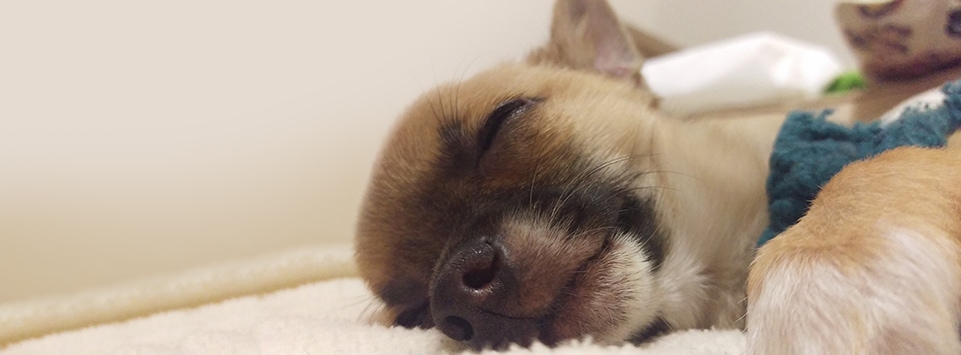Do dogs dream?
We've all wondered at one stage or another if our pets truly have dreams and what might be going on in that furry noggin of theirs. It might be when you see Kip sleeping soundly with a sudden bark or spasming legs. While your dream might be starring you as James Bond saving a scantily clad damsel in distress, chances are your pooch is dreaming about something a little closer to home.
Studies have shown that the sleep patterns and brain functioning in mammals such as humans, dogs and cats is similar. Unlike other animals like reptiles, mammals have a distinct REM (rapid eye movement) sleep stage which is when dreaming is known to occur in humans. In this sleeping phase, brain activity increases while muscles typically relax or become paralysed which prevents us from acting out our dreams.

An older study performed by Michel Jouvet studied cats with modified neural systems. The part of their brain that prohibits movement during sleep (night paralysis) was removed. During REM cycles, these cats walked around much like sleepwalking and mimicked stereotypical cat activities like hunting or turning of the head as if following a stimulus. Similarly in humans, lapses in postural atonia (muscular paralysis) during sleep may result in walking, talking, punching and kicking as we dream.
The simplest way to know if a human has experienced a dream is by asking them. As talking with animals seems to be limited to Disney princesses, getting an answer out of your dog may be a little more difficult. However studies done on the neural activity of mammals has answered the curious question of whether our pets dream.

Researchers Kenway Louie and Matthew Wilson conducted a study on adult rats implanted with microelectrode arrays to measure activity in their Hippocampus. This is a part of the brain involved in memory consolidation and is activated during REM sleep. The rats were trained to run through a circular maze with food used as a positive reinforcer. Their brain activity during these trials was compared against their brain activity during their next REM sleep cycle. Complex patterns in the brain's activity from the maze trials were found to recur in subsequent REM sleep sessions. The replication of these patterns supports the claim that animals do dream and when they do, it most likely revolves around frequent or recent activities and incidents.
This would support experiences with rescue animals from abusive homes who seem to experience nightmares. Frequent abuse is remembered and may reappear through their dreams. Always be careful if you are waking your pet from a nightmare as they can sometimes lash out before they adjust from their dream state to reality. Using your voice rather than physically touching them is the best option to get your pet's attention. A sudden touch during a nightmare may startle your pet and cause them to bite or scratch on instinct before realising they're awake.
It may seem unusual seeing our pets dream but don't be alarmed, this is a normal part of their sleep cycle. While you're imagining fiery explosions and driving off in your really fast car, little Kip is probably just dreaming about the glorious game of fetch you both played after work.

Owner of a small Chihuahua army and lover of all things pets; when Jess isn't managing her pup Nacho's instagram you can find her writing about all the awesome new products on the Pet Circle website!
Suggested for you
























